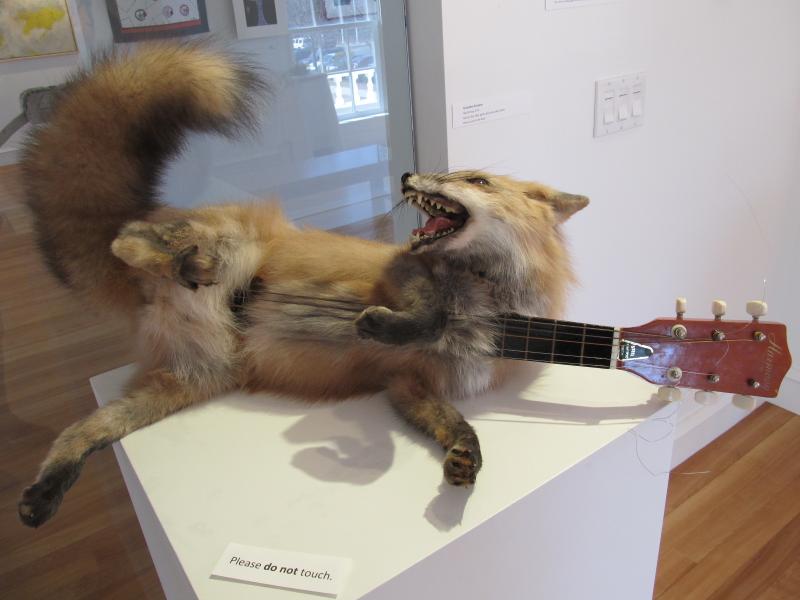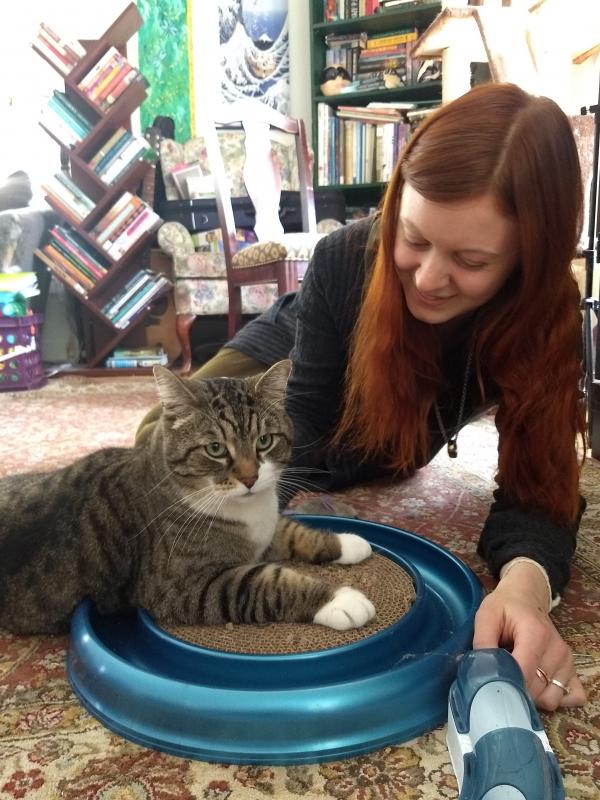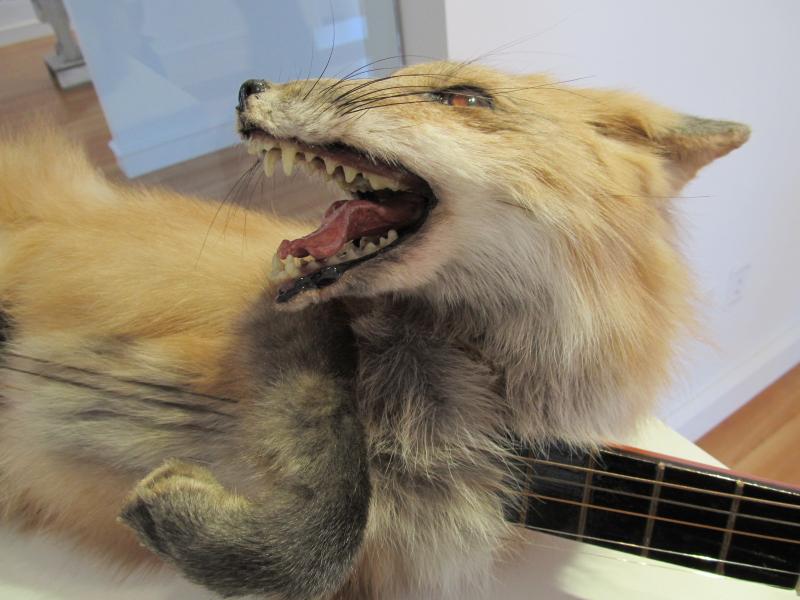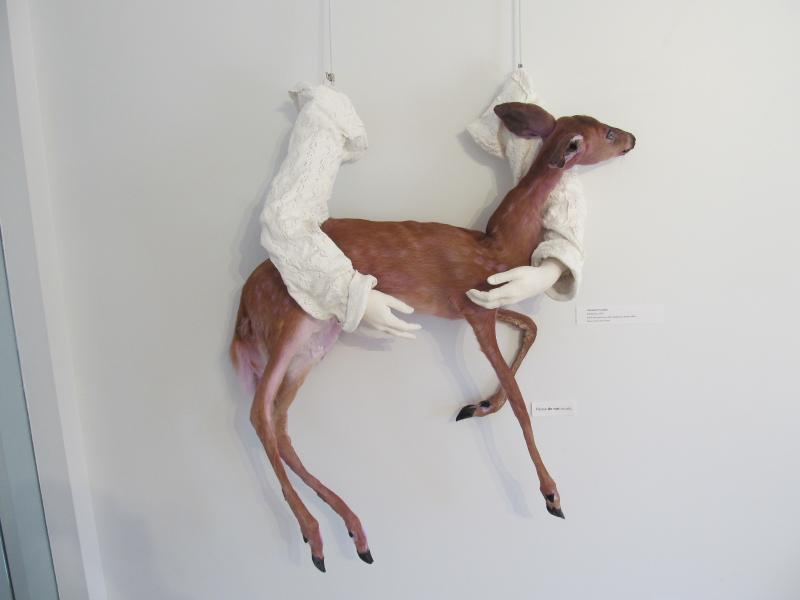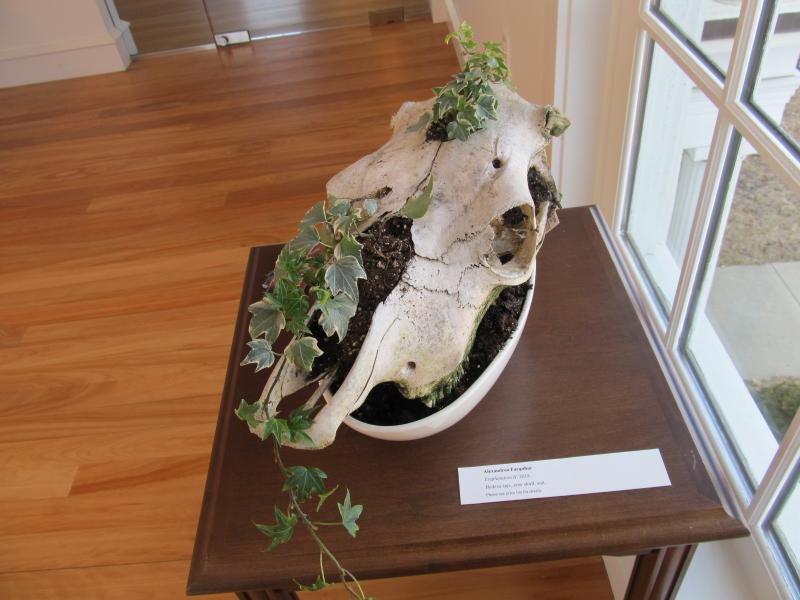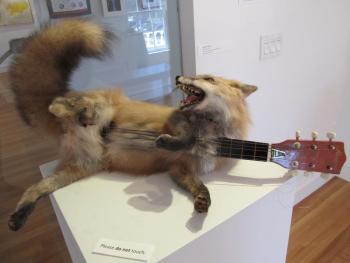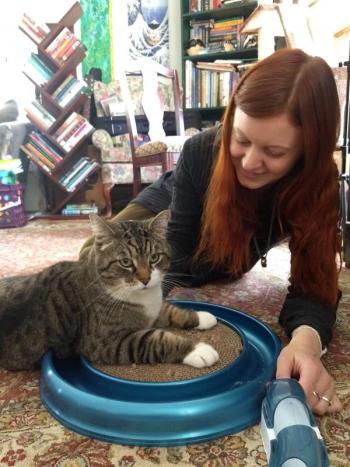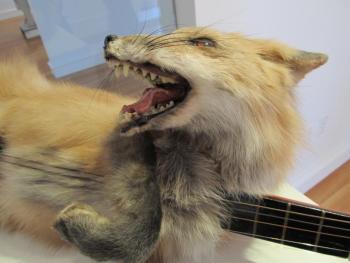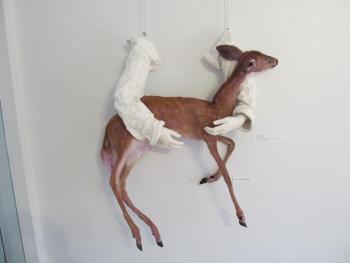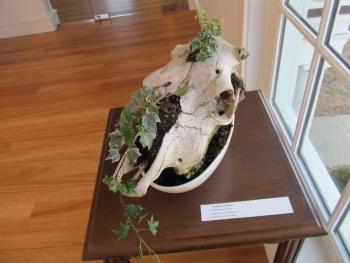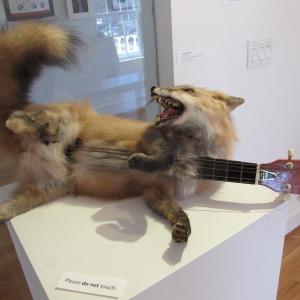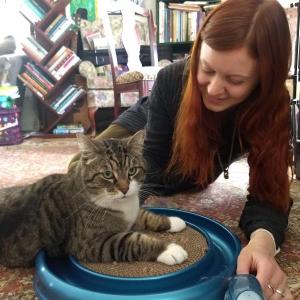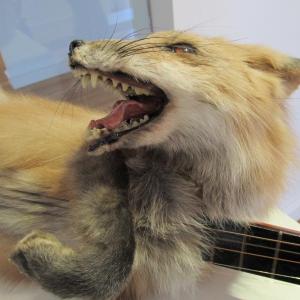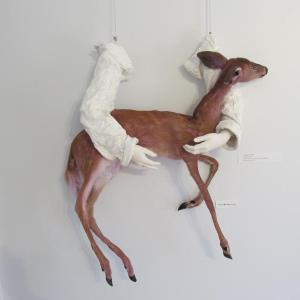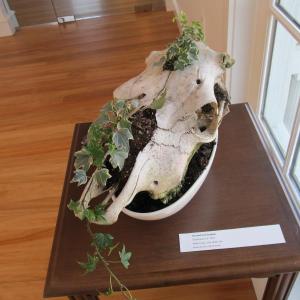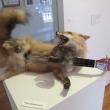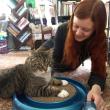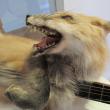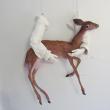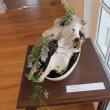Artist fuses her dreams into taxidermy as art
Bar Harbor artist Alexandrea Farquhar has put together an exhibit at Maine Coastal Islands National Wildlife Refuge Visitor Center in Rockland from the bodies of roadkill.
Her exhibit, Post-Morphean Dreamwork, is composed of the images that she wrote down in a dream journal over several years, then constructed, using ethically-sourced taxidermy, discarded materials, plaster casting, and clay sculpture.
Farquhar, a senior at College of the Atlantic, and where she studies natural history and museum exhibit prep, said: “I first encountered non-traditional taxidermy when I was a kid. I really liked the way it looked, yet at the same time, it kind of unsettled me. I think with this medium, there’s a lot to explore in the terms of the way we look at art.”
In one of her pieces, a fox seems to rival John Mayer’s “guitar face,” lying on its side with the neck and head of an old guitar extruding from its body.
“I usually have the animals donated to me or I find them myself,” she said.
At school, she works on her pieces at the Prep Lab, which has all of the tools she needs to work on her taxidermy. In the case of the fox, which had been donated to the College, she said, “the fox was already here in the freezer at the College of The Atlantic, and I got permission to use it.”
The old-school method of taxidermy requires her to strip the skin off the animal, tan it, and then remold it around a handmade form.
“All of the pieces in the exhibition come from dream images that I’d had that I’d written down,” she said. “With this fox, I had a dream that I was walking through an art gallery, actually. II saw this fox and this old six-string guitar neck coming out of it in a glass case and it really stuck in my mind.”
Many people have different reactions to taxidermy as art. Some people she’s said almost seem afraid of the exhibit and tentatively approach each art piece. Some wholly embrace the exhibit with curiosity. And some people, Farquhar completely understands, are unsettled by it, as well.
“I’ve always really loved animals and have always had pets,” she said. “And seeing a dead animal being presented in an artificial way can be unsettling. So, it took some courage for me to try and present the animals in such a way that I could make them into a reflection of myself. I still struggle with that quite a bit.”
One piece hanging on the far wall, features a plaster cast of two arms cradling a tiny fawn in mid-air. This piece is very personal to Farquhar.
“I made those casts of my own hands,” she said. “The fawn came to me when my professor hit her with his truck one fall by accident. He brought her to me. She was quite small and there was a good chance she might not have made it through the winter.”
Where the fox is comical, the fawn is tender, and surprisingly emotional.
“Given the terrible circumstances around her death, and that she was so small, I made this piece to convey a sense of protectiveness,” she said.
Mainly the public reaction to Farquhar’s artwork has been positive, but she admitted that isn’t for everyone.
“Some people are more open to taxidermy as art than others,” she said. “In some ways children are better equipped to handle this exhibit than certain adults. It all depends on your background.”
Post-Morphean Dreamwork is open to the public until April 30. To see more pieces on display visit: https://mainecoastislands.org/programs-art/
Kay Stephens can be reached at news@penbaypilot.com
Event Date
Address
United States

